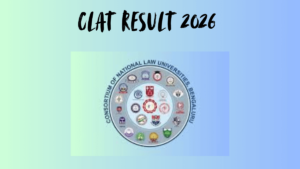Glycerin in food
Glycerin is often referred to as an osmotic laxative. Glycerin, on the other hand, may act in addition to or instead of these mechanisms through its local irritating effects. Additionally, glycerin may have lubricating and faecal softening properties. Glycerin suppositories normally take 15 to 30 minutes to operate, and when given rectally, it acts as a hygroscopic and/or local irritant, pulling water from the tissues into the faeces and instinctively accelerating evacuation. By generating an osmotic gradient between the blood and ophthalmic fluid, glycerin lowers intraocular pressure. As a result, fluid from the aqueous and vitreous humors is pushed into the bloodstream.
When fat is digested as a source of energy, glycerin and fatty acids are released into the bloodstream as a substrate for the creation of triacylglycerols and phospholipids. Proteins are not glyced by circulating glycerin. Glycerol is a pure form of glycerin, whereas glycerin is a mixture. Glycerin, on the other hand, is made up of 95 per cent glycerol. Despite the fact that they have the same chemical formula, they cannot be used interchangeably. Particularly when purity is desired. Before being employed in glycolysis or gluconeogenesis, glycerol must be transformed to the intermediate glyceraldehyde 3-phosphate. The enzymes glycerol kinase, NAD+-dependent G3P dehydrogenase, and FAD-linked G3P dehydrogenase regulate glycerol metabolism.
Glycerol, often known as glycerin, is a simple polyol molecule present in the backbone of lipids termed glycerides. It’s commonly used in FDA-approved wound and burn therapies, as well as as a bacterial culture medium, due to its antibacterial and antiviral qualities. It can be utilised as a sweetener in the food business as well as a useful marker for measuring liver damage. It’s also employed in medicinal formulations as a humectant. Glycerol is a hygroscopic substance that is miscible with water.
Read More About:
- Greenhouse Gases
- Vermicompost / Vermicomposting: Meaning, Process, Price
- The Biggest/Largest Country In The World
- Respiratory System: Parts, Function, Organs And Diseases
- Folk Dances Of India
Glycerin Uses for Skin Soap and Cream
Glycerin is beneficial to the skin because it functions as a humectant, a substance that allows the skin to retain moisture, relieve dryness, and refresh the skin’s surface. It can also soften skin, which is beneficial if you have eczema or psoriasis and have rough or dry regions. Glycerin also contains antibacterial qualities, which means it helps protect the skin from dangerous microbes, as well as mend and expedite wound healing.
Although glycerin is thought to have skin-whitening qualities, there is little evidence to support its usage for this purpose. Some of these whitening claims could be attributed to its exfoliating capabilities, which occur when it is administered topically. The humectant qualities of glycerin can enhance moisture in the outer layer of the skin, resulting in softer top layer skin that is simpler to exfoliate. Exfoliation is the process of removing dead skin cells from the surface of the skin, which can help brighten a dull complexion and prevent the appearance of dark spots, scars, and age spots.
Glycerin can hydrate and exfoliate your skin on its own, but combining it with additional components like lemon and rose water can help rejuvenate dull, dry skin or soften your skin for easier exfoliation, and therefore whiten your skin. Although there is no scientific proof to support these claims, these substances work well together since glycerin gives hydration and moisture and rose water works as an astringent. Rosewater not only cleanses but also tightens and tones your skin, while lemon juice’s acidity may help with discolouration and uneven pigmentation.
There is, however, no proof to back up the claim that any of these chemicals may lighten your skin.
Glycerin Uses for Hair
Glycerin is safe to use on hair, and you can use it in a variety of ways depending on your hair concern. You’ll need pure glycerin if you want to make a DIY mask or hair spray. Many internet vendors, drugstores, and beauty stores sell pure glycerin.
Using aloe vera and glycerin to make a mask will moisturise and nourish the scalp. It can also aid in the treatment of dandruff. It’s possible that the mixture has antibacterial and moisturising qualities.
Glycerin Benefits: Glycerin ke Fayde
ग्लिसरीन को अक्सर एक आसमाटिक रेचक के रूप में जाना जाता है। दूसरी ओर, ग्लिसरीन, इन तंत्रों के अलावा या इसके बजाय अपने स्थानीय परेशान करने वाले प्रभावों के माध्यम से कार्य कर सकता है। इसके अतिरिक्त, ग्लिसरीन में चिकनाई और मल को नरम करने वाले गुण हो सकते हैं। ग्लिसरीन सपोसिटरीज़ को सामान्य रूप से संचालित होने में 15 से 30 मिनट लगते हैं, और जब इसे रेक्टली दिया जाता है, तो यह एक हीड्रोस्कोपिक और/या स्थानीय अड़चन के रूप में कार्य करता है, ऊतकों से पानी को मल में खींचता है और सहज रूप से निकासी में तेजी लाता है। रक्त और नेत्र द्रव के बीच एक आसमाटिक प्रवणता उत्पन्न करके, ग्लिसरीन अंतर्गर्भाशयी दबाव को कम करता है। नतीजतन, जलीय और कांच के हास्य से द्रव रक्तप्रवाह में धकेल दिया जाता है।
जब वसा को ऊर्जा के स्रोत के रूप में पचाया जाता है, तो ग्लिसरीन और फैटी एसिड को ट्राइसीलग्लिसरॉल्स और फॉस्फोलिपिड्स के निर्माण के लिए एक सब्सट्रेट के रूप में रक्तप्रवाह में छोड़ा जाता है। ग्लिसरीन को परिचालित करने से प्रोटीन ग्लाइस नहीं होते हैं। ग्लिसरॉल ग्लिसरीन का शुद्ध रूप है, जबकि ग्लिसरीन एक मिश्रण है। दूसरी ओर, ग्लिसरीन 95 प्रतिशत ग्लिसरॉल से बना होता है। इस तथ्य के बावजूद कि उनके पास एक ही रासायनिक सूत्र है, उनका परस्पर उपयोग नहीं किया जा सकता है। खासकर जब पवित्रता वांछित हो। ग्लाइकोलाइसिस या ग्लूकोनोजेनेसिस में नियोजित होने से पहले, ग्लिसरॉल को मध्यवर्ती ग्लिसराल्डिहाइड 3-फॉस्फेट में बदलना चाहिए। एंजाइम ग्लिसरॉल किनेज, एनएडी+-निर्भर जी3पी डिहाइड्रोजनेज, और एफएडी-लिंक्ड जी3पी डिहाइड्रोजनेज ग्लिसरॉल चयापचय को नियंत्रित करते हैं।
ग्लिसरॉल, जिसे अक्सर ग्लिसरीन के रूप में जाना जाता है, ग्लिसराइड कहे जाने वाले लिपिड की रीढ़ की हड्डी में मौजूद एक साधारण पॉलीओल अणु है। यह आमतौर पर एफडीए-अनुमोदित घाव और जलने के उपचार के साथ-साथ जीवाणु संस्कृति माध्यम में इसके जीवाणुरोधी और एंटीवायरल गुणों के कारण उपयोग किया जाता है। इसका उपयोग खाद्य व्यवसाय में स्वीटनर के साथ-साथ लीवर की क्षति को मापने के लिए एक उपयोगी मार्कर के रूप में किया जा सकता है।
Related Posts:
- Fermentation: Process, Examples, Reaction, Diagram
- Lens Formula: Derivation, Magnification, Power Of Lens
- Diversity Meaning
- Father Of Geography
FAQs on Glycerin
What is the purpose of glycerin?
Glycerin is a sort of moisturising substance known as a humectant.
Is it true that glycerin is toxic to dogs?
Glycerin is non-toxic and has a wide range of uses in the food industry.
Is glycerine beneficial to one’s health?
Glycerin has been shown to help with skin health, digestion, and physical performance.
Is glycerine beneficial to the skin?
Because it functions as a humectant, glycerin is beneficial to the skin. It’s a humectant that helps the skin keep its moisture.
Glycerin is used in dog treats for a variety of reasons.
By reducing water activity, glycerine is utilised to bind water in canned foods and snacks. It provides the necessary elasticity for a chewy texture in pet food and treats.









 AILET Result 2026 Release Date, How to D...
AILET Result 2026 Release Date, How to D...
 CLAT Result 2026 Out, Download Scorecard...
CLAT Result 2026 Out, Download Scorecard...
 CLAT Topper List 2026 Released with Rank...
CLAT Topper List 2026 Released with Rank...














